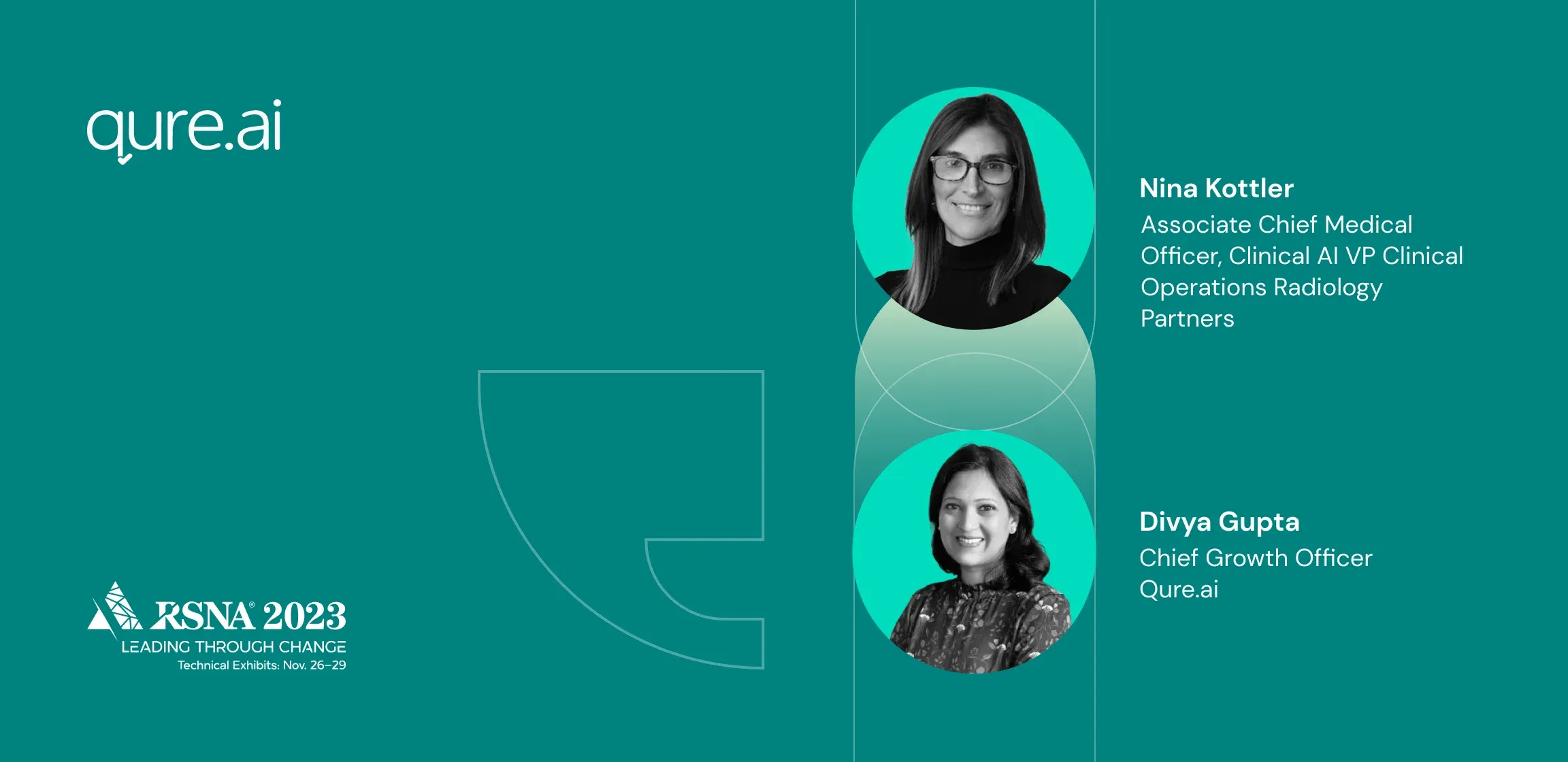At RSNA 2023, Divya Gupta, Chief Growth Officer at Qure.ai speaks with Dr. Nina Kottler, Associate CMO for Clinical AI and VP of Clinical Operations at Radiology Partners. The discussion covers the impact of artificial intelligence (AI) in radiology, particularly in plain imaging. Dr. Kottler describes the transformative role of AI in radiology's digital journey, from film-based to digital radiography, and its integration with Picture Archiving and Communication Systems (PACS).
Back
Main Synopsis of Discussion: The talk revolves around AI's impact on the precision and efficiency of X-ray interpretation, a staple in radiology. Dr. Kottler explores the gradual clinical adoption of AI, focusing on deep learning and convolutional neural networks (CNNs), and the challenges in integrating AI into existing workflows, establishing business models, and demonstrating clinical benefits. She also addresses the diverse applications of AI tools like computer-aided detection (CADe) and diagnosis (CADx), and their effectiveness in screenings and diagnostic accuracy.
Key Points:
- The Critical Role of AI in Managing High-Volume X-ray Workloads: Dr. Kottler emphasizes the importance of AI in addressing the growing volume of X-ray exams, which form a significant portion of radiological work. With the rate of imaging growing faster than the number of radiologists, AI's ability to enhance efficiency and manage high volumes is crucial. AI not only aids in handling the sheer quantity of X-rays but also helps general radiologists reach the proficiency level of subspecialists, especially as traditional expertise in X-ray interpretation diminishes over time.
- Challenges and Barriers to AI Integration in Radiology: The conversation highlighted several hurdles in fully integrating AI into radiological practices. These include the need for more streamlined and "plug-and-play" AI tools, the importance of AI in aiding reporting efficiency (beyond just identifying findings), and the necessity of seamless integration into existing workflows. Dr. Kottler points out that the success of AI tools depends not only on their algorithmic accuracy but also on their engineering quality, which ensures timely data processing and results delivery.
- Future Directions and Collaboration in Radiology AI: Looking towards the future, Dr. Kottler advocates for a strong partnership between clinicians and AI tool developers. This collaboration is essential to guide the development of AI in a direction that genuinely supports and enhances clinical practice. Despite the hype around foundational models and generative AI, she stresses the irreplaceable value of human-AI collaboration, envisioning a future where technology and clinicians work together more effectively than either could alone.
Conclusion: The session concludes with a hopeful view of AI's role in enhancing X-ray diagnostic capabilities. Dr. Kottler anticipates a future where integrated diagnostic services, combining data from radiology, pathology, and genomics, redefine the radiologist's role in patient care. She highlights ongoing challenges such as data quality, image labeling, and ethical concerns in AI healthcare applications.
